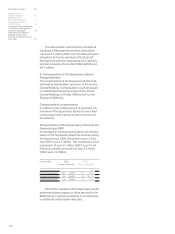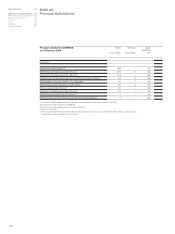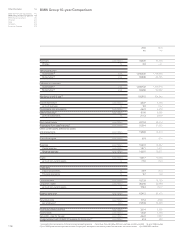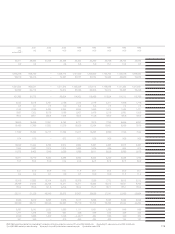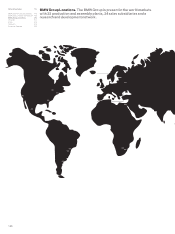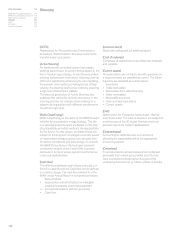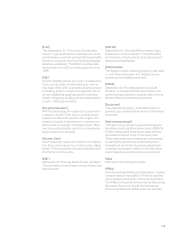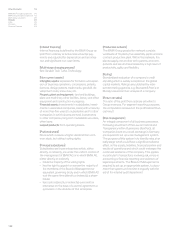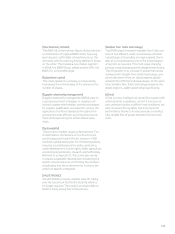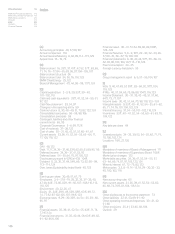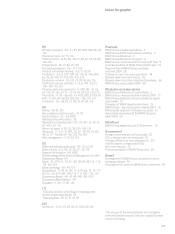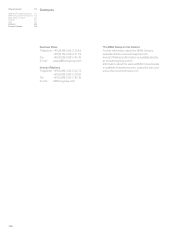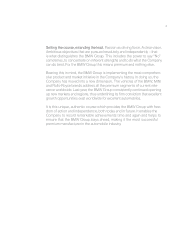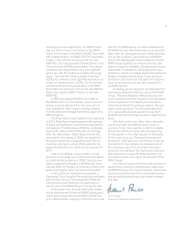BMW 2004 Annual Report Download - page 125
Download and view the complete annual report
Please find page 125 of the 2004 BMW annual report below. You can navigate through the pages in the report by either clicking on the pages listed below, or by using the keyword search tool below to find specific information within the annual report.124
Other Information 116
BMW AG
Principal Subsidiaries
116
BMW
Group10-year Comparison
118
BMW Group Locations 120
Glossary 122
Index 126
Contacts 128
Financial Calendar 129
[Internal financing]
Internal financing is defined by the BMW Group as
profit from ordinary activities less actual tax pay-
ments and adjusted for depreciation and amortisa-
tion and significant non-cash items.
[Multi-stage charging process]
See Variable Twin Turbo Technology.
[Non-current assets]
Intangible assets: expenses for formation and expan-
sion of business operations, concessions, patents,
licences, design patents, trade marks, goodwill, de-
velopment costs, know-how, etc.
Property, plant and equipment: land and buildings,
plant and machinery, other facilities, factory and office
equipment and construction in progress.
Financial assets: investments in subsidiaries, invest-
ments
in associated companies,
loans
(with a maturity
of more than five years) to subsidiaries and to other
companies in which shares are held, investments
in other companies, long-term marketable securities,
other loans.
Leased products: from operating leases.
[Preferred stock]
Stock which receives a higher dividend than com-
mon stock, but without voting rights.
[Principal subsidiaries]
Subsidiaries are those enterprises which, either
directly or indirectly, are under the uniform control of
the management of BMW AG or in which BMW AG,
either directly or indirectly
– holds the majority of the voting rights
– has the right to appoint or remove the majority of
the members of the Board of Management or
equivalent governing body, and in which BMW AG
is at the same time (directly or indirectly) a share-
holder
– has control (directly or indirectly) over another
enterprise on the basis of a control agreement or
a provision in the statutes of that enterprise.
[Production network]
The BMW Group production network consists
worldwide of 16 plants, five assembly plants and one
contract production plant. Within this network, the
plants supply one another with systems and com-
ponents and are all characterised by a high level of
productivity, agility and flexibility.
[Rating]
Standardised evaluation of a company’s credit
standing which is widely accepted on the global
capital markets. Ratings are published by inde-
pendent rating agencies e.g. Standard& Poor’s or
Moody’s based on their analysis of a company.
[Return on sales]
The ratio of the profit from ordinary activities to
Group revenues. For segment reporting purposes,
the computation is based on the profit before finan-
cial result.
[Risk management]
An integral component of all business processes.
Following enactment of the Law on Control and
Transparency within Businesses (KonTraG), all
companies listed on a stock exchange in Germany
are required to set up a risk management system.
The purpose of this system is to identify risks at an
early stage which could have a significant adverse
effect on the assets, liabilities, financial position and
results of operations and which could endanger the
continued existence of the company. This applies
in particular to transactions involving risk, errors in
accounting or financial reporting and violations of
legal requirements. The Board of Management is
required to set up an appropriate system, to docu-
ment
that system and monitor it regularly with the
aid of the internal audit department.


